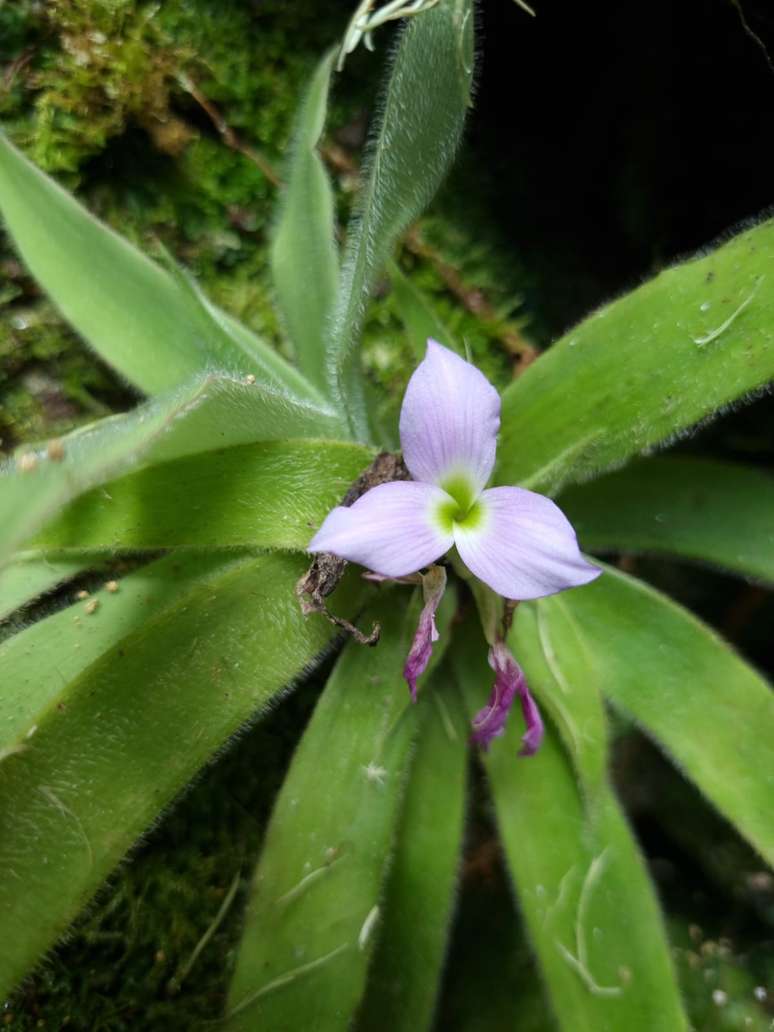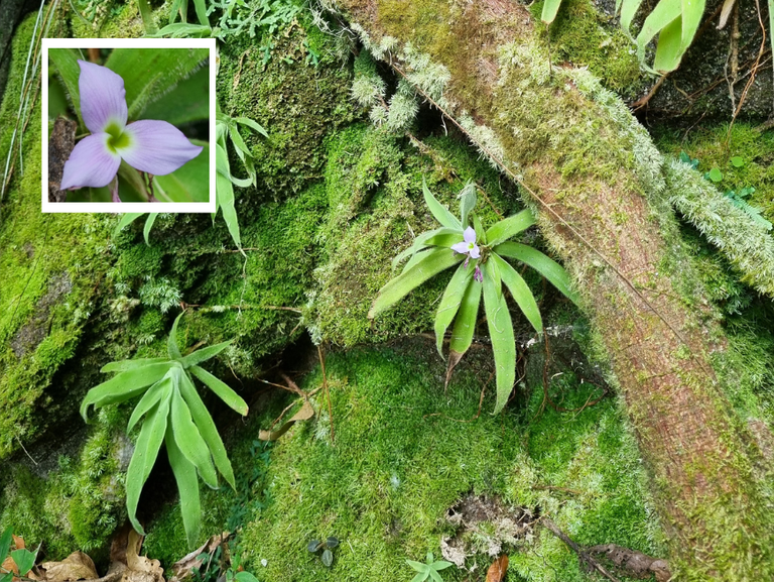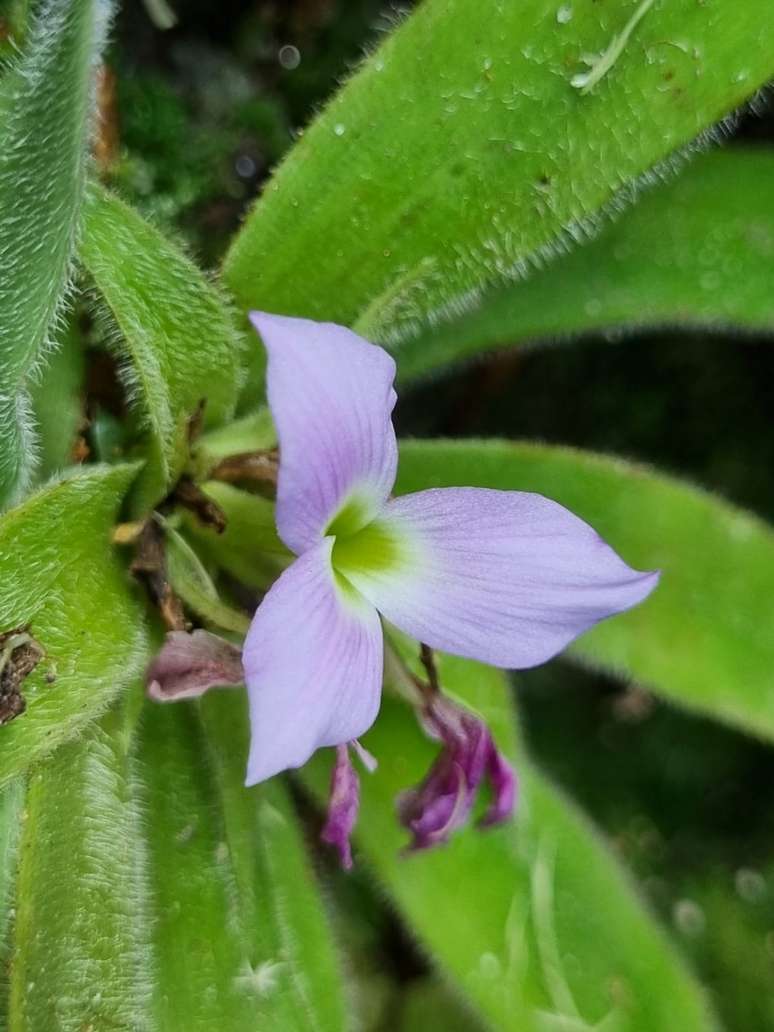Julio Cesar Ribeiro found the new species, called Krenakanthus ribeiranus.
One new species of bromeliad with velvety and hairy leaves was discovered in Minas Gerais. The feature intrigued researchers and earned it the nickname “hairy bromeliad.” The discovery began unexpectedly, when he was a resident in the municipality of Alvarenga Julio Cesar Ribeiro I explored a region with many waterfalls. On a rock face he came across the plant.
“In addition to being a plant that I had never seen in the region, the hairy grass-like leaves and the flowers that emerge from among the leaves caught my attention,” says Júlio Cesar, who photographed the plant and sent the photos to researchers.
The plant is so different that when the researchers received the photo, they thought it was a different species from the bromeliad.
“This plant is so different that when Júlio sent us a photo, we thought it might be anything but a bromeliad! It’s hard to imagine a bromeliad with velvety, hairy leaves, and that’s just one of the reasons why it make this discovery exciting,” he says Dayvid Coutoresearcher at the National Institute of the Atlantic Forest (INMA) and one of the authors of the work describing the new species, published in the scientific journal Phytotaxa.
The article was also written by researchers from the Botanical Garden of Rio de Janeiro, the Federal University of São João del-Rei (UFSJ), the Federal University of Rio Grande do Sul (UFRGS) and the Federal University of Rio de Janeiro (UFRJ). .
The new species was named Krenakanthus ribeiranus, and is known from only one mountain in the Rio Doce Valley. Before the discovery of this new species, only one other non-hairy species of the Krenakanthus genus was known, whose name means ‘Krenak flower’, a tribute to the original populations of the Rio Doce valley region. Ribeiranus is a tribute to its discoverer, Júlio César Ribeiro.
“The tribute is a recognition of Júlio’s watchful eye, who has already contributed to the discovery of other species in the region, acting as a citizen scientist,” he says Paolo Gonellaprofessor at UFSJ.

Citizen science is a partnership between scientists and citizens in the development of scientific research, in which citizens can participate in various stages of research, such as data collection, interpretation and analysis, and in the joint development of projects to answer scientific questions.
“In the case of this research, Júlio contributed by raising a question which was ‘what species is this that I don’t know?’ up to the collection of data, which is fundamental not only to confirm that it was a new species, but also to estimate its risk of extinction”, adds Gonella.
Researchers warn about the conservation of this species, which is already extremely threatened.
“Based on its very restricted distribution and the advanced degree of degradation of the region in which it was found, we evaluate this species as critically endangered, the highest degree of risk” underlines the researcher Eduardo Fernandezcoordinator of the project of the Center for Evaluation of the State of Conservation, of the National Center for the Conservation of Flora (CNCFlora), the body of the Botanical Garden of Rio de Janeiro responsible for the preparation of the National Red List.

In the study, the researchers highlight threats to the species and its habitat, such as deforestation for open grazing, the increase in the frequency and intensity of uncontrolled fires, and the expansion of coffee plantations.
“Some urgent measures need to be taken to protect this species, such as a study to create a conservation unit and the inclusion of the species in conservation policies developed for the region. These measures, combined with ex situ conservation strategies, can help us to ensure a prosperous future for the hairy bromeliad”, adds Eduardo Fernandez.
The discovery adds to many other recent finds in eastern Minas Gerais, which consolidate the region as one of the last frontiers of botanical knowledge in eastern Brazil. In the last decade alone, more than 30 new plant species have been discovered in the mountains of eastern Minas Gerais.
“Due to their great wealth, unique and extremely threatened, the mountains of eastern Minas Gerais have gradually attracted the attention of public authorities, but still in an incipient way. It is essential to establish conservation units in the region, which has one of the largest deficits evident in the in situ conservation measures in the Medio Rio Doce region”, underlines Paulo Gonella.
According to the professor, “in addition to hosting a unique biodiversity, these mountains function as ‘water reservoirs’, protecting the springs that supply the municipalities of the region and which were fundamental in guaranteeing quality water to many cities when the Rio Doce was been hit. Disaster Marianna”.
Recently, the region was incorporated into the Capixaba-Gerais Territorial Action Plan, an initiative that unites public authorities, organized civil society and researchers in the design and implementation of strategies that aim to improve the conservation status and knowledge of threatened species in the territory.
Source: Terra
Ben Stock is a lifestyle journalist and author at Gossipify. He writes about topics such as health, wellness, travel, food and home decor. He provides practical advice and inspiration to improve well-being, keeps readers up to date with latest lifestyle news and trends, known for his engaging writing style, in-depth analysis and unique perspectives.







![Tomorrow belongs to us: What awaits you in the episode of August 29, 2020, 2020 [SPOILERS] Tomorrow belongs to us: What awaits you in the episode of August 29, 2020, 2020 [SPOILERS]](https://fr.web.img6.acsta.net/img/51/c7/51c72d2f42c8a12290ae58aeb9072b31.jpg)

